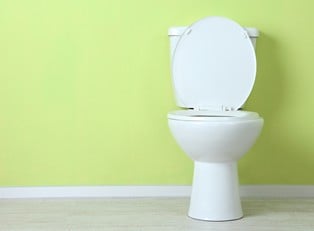Overactive Bladder Information
An overactive bladder is caused by the muscles of the urinary wall contracting involuntarily. This involuntary contraction of the urinary wall causes the strong need to urinate. This strong urge to urinate can occur even when the bladder is not full at all. This feeling continues until you go to the restroom.
Overactive bladder falls into the category of urinary incontinence which means that urine is released even when it isn't necessary. This condition can happen to anyone but it is most commonly found in older people because over time the muscles that stop the bladder from leaking have become weak with age. This can become a problem for anyone experiencing an overactive bladder. It can affect one's daily life. Nobody wants to worry about having an accident or constantly planning their schedule around going to the bathroom. Luckily there is help for this problem.
Causes/Symptoms of an Overactive Bladder
Overactive bladder causes are involuntary contractions of the bladder muscles. This is usually because of a nerve and muscle problem within the bladder. Problems with the nervous system can lead to an overactive bladder. These causes include:
- Spinal cord injury
- Strokes
- Multiple Sclerosis
- Diabetic Neuropathy
- Parkinson's Disease
- Dementia
The overactive bladder symptoms are simple. If you experience a strong urgency to urinate, urinate frequently and have a problem with urinating while you are sleep you should go visit a doctor. They will help you with your problem and give you overactive bladder information.
Overactive Bladder Treatment
Luckily there are treatment options for an overactive bladder. Depending on what the patient is capable of doctors will recommend treatments such as pelvic muscle rehabilitation and behavioral therapies. Pelvic muscle rehabilitation usually involves kegel exercises. This overactive bladder treatment involves strengthening the pelvic muscles by contracting them. This treatment is more helpful to women and should be done often. Biofeedback, vaginal weight exercises and electrical stimulation are also treatment options for overactive bladder. Behavioral therapy is also a treatment used for overactive bladder because it helps people gain control over their bladder again by teaching them to resist the urge to urinate.
Medications are also used to treat this condition. The medications used are anticholinergics which reduces the over activity of the bladder. Other drugs such as Tolterodine, Oxybutynin, antidepressants and botox are treatment options for an overactive bladder.
For those with a really bad case of overactive bladder scheduling trips to the bathroom, managing your diet and fluid intake, and buying the correct undergarments is very important.
Overall overactive bladder is a condition that no one wants to deal with. Whether it is age or a medical condition that caused the problem treatments are available. Depending on the situation and the severity of the problem exercises, behavioral therapies and medications can usually treat the problem.
If you have overactive bladder signs and think you may be experiencing overactive bladder visit a doctor immediately. The sooner you seek treatment the sooner you can start to reverse this problem. Overactive bladder can be controlled as long as the patient is willing to do what is needed in order to treat the problem. Taking the medication and doing the exercises daily are very important. Overactive bladder is an unfortunate thing to go through but it does not have to control your life.




